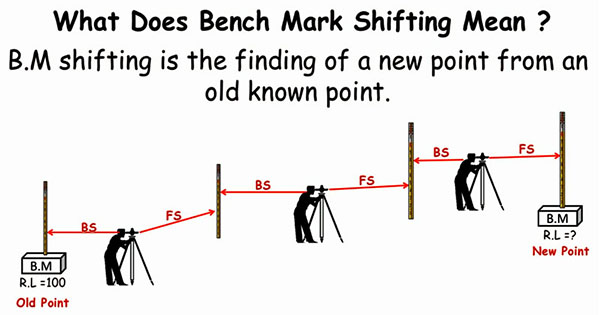Details of bench mark shifting in land surveying

This construction video tutorial throws light on bench mark shifting in land surveying. The video is presented by the renowned engineer S.L. Khan.
A benchmark belongs to a point of reference by which the calculation of something can be done. In surveying, a "bench mark" (two words) means a post or other permanent mark set at a identified elevation that is applied as the root for working out the elevation of other topographical points.
Bench Mark shifting refers to the process for determining the level of a newly situated point from an old known point.
The process is based on the following two conditions:-
- Condition 1 – If the new point is adjacent to an old point or B.M.
- Condition 2 – If the new point is away from an old point.
In first condition, it is required to arrange the instruments adjacent to the bench mark. This is the old bench mark, the position should be from backside or BS. Backside refers to the first site after sitting on the instrument. After choosing the backside, the foresight should be directly chosen on the new point.
So, R.L of the new benchmark = H.I – FS
H.I denotes the height of instrument = old bench mark + backside (BS)
This method is applicable when the points are adjacent to each other.
To get further information, go through the following video tutorial.
Video Courtesy : Engineer Boy

